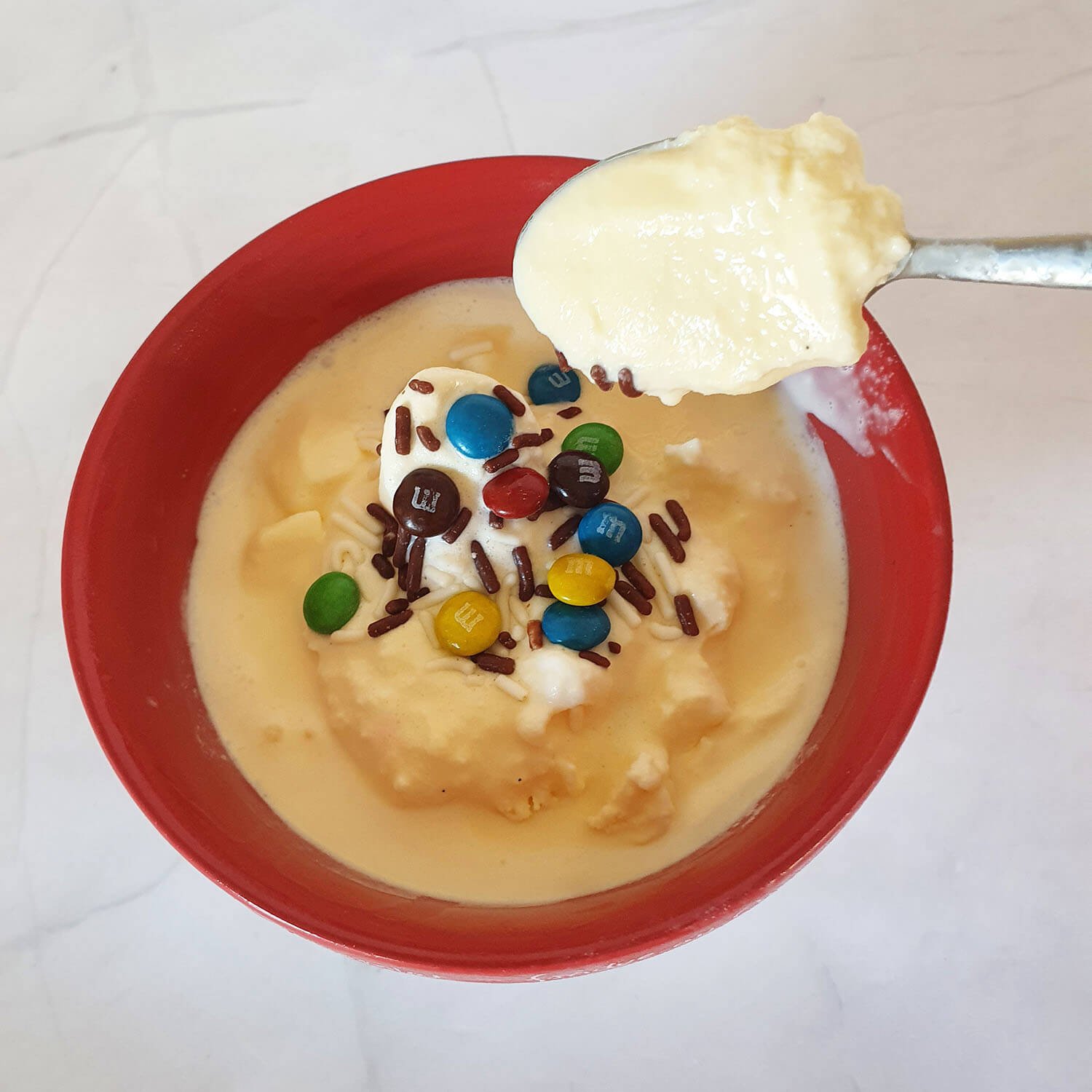Ice Cream Science Experiment
Learn about chemistry and make your own soft serve ice cream in just 10 minutes, using this simple science experiment.
What you need:
1 cup cream
2 tbsp granulated sugar (or sugar substitute)
1/2 tsp vanilla essence
3 cups ice
1/3 cup salt
1 small sealable bag
1 large sealable bag
Ice cream toppings of your choice
What to do…
Make sure your bags are clean and have no holes.
Carefully add cream, sugar and vanilla essence to the small bag.
We found it best to have one person hold the bag, while another added the ingredients BUT you could also line a small bowl with the plastic bag to ensure it doesn’t spill the ingredients as you add them.Seal the small bag and mix the ingredients by gently wobbling or shaking the bag around.
Open an edge of the small bag’s seal and try to remove as much air as possible before resealing it. If it’s just you eating the ice cream, you could even suck the air out of the bag.
Place the small bag inside the large bag and add the ice.
Add the salt to on top of the ice and then move the ice and salt around so that the little bag is completely surrounded by ice.
Seal the large bag then shake the bags vigorously for 5 to 10 minutes. Because the bags can feel very cold on your hands, have a tea towel nearby that you can wrap your hands in, to stop them from getting too cold while you do this.
After 5 - 10 minutes, remove the small bag from the large one. If the experiment has been done correctly, the cream in your small bag will have hardened to form ice cream!
Scoop out the ice cream immediately, add your favourite toppings and enjoy!
The science behind your ice cream…
Why do I need to shake the bags to make ice cream?
Ice cream is an emulsion, which means it is a combination of two liquids that don’t normally mix. In an emulsion droplets of one liquid is dispersed with another.
Ice cream is made up of ice crystals, fat molecules and air. By shaking the bag, you emulsify the ice cream - dispersing the ice, fat and air together.
Why did the cream become ice cream?
When we measure how hot or cold something is, we are actually measuring how fast molecules are moving around. When something is cooler, the temperature is lower because the molecules have slowed down. When temperatures are low enough, molecules can link up and not break apart, which makes things freeze.
This is what happens to the cream in your small bag. The temperature got so low that the molecules in the cream linked up to make a solid.
Why do we add salt to the ice?
The freezing point of water is zero degrees celsius, this is also the same as the melting temperature for ice.
Salt lowers the melting temperature of ice, which makes the ice cream freeze faster. The more salt you add, the lower the melting temperature of the ice will be and the colder the icy solution will be.
If you try the experiment again with no salt you’ll notice that the mixture won’t get cold enough to freeze the cream.
Did you give it a go?
Send us a photo of your ice cream experiment and what your learnt and you might find your creation featured on the Upstart website OR in a future issue of Upstart magazine… AND win a prize!













